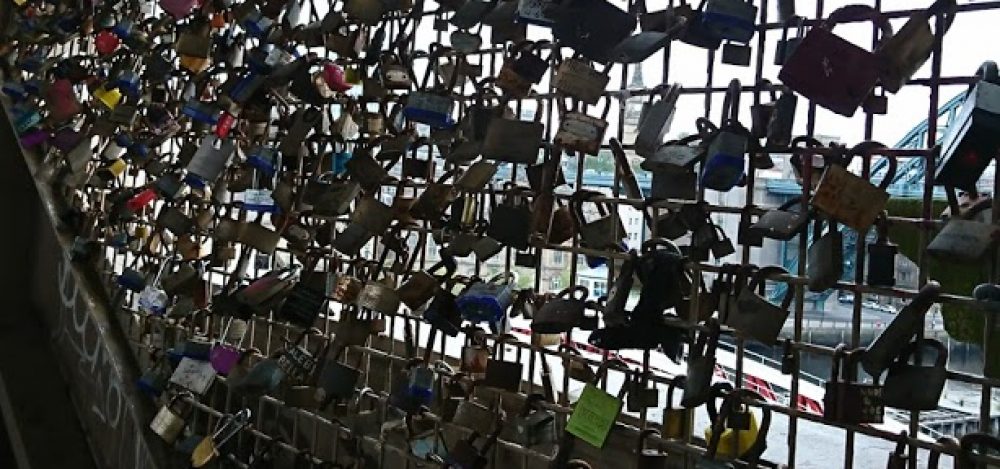In which Oral History Collective member Alison Atkinson-Phillips does not offer an opinion on the destruction of that statue in Bristol.
The last week has certainly been an interesting one for those of us interested in the importance of memorials and monuments. Last Thursday (4 June), the internet went nuts over an old photo of a Confederate statue covered in #blacklivesmatter graffiti but tagged as being in London. By Sunday, protesters in Bristol had not only pulled down a statue of a local slave trader, but thrown it in the harbour as a symbolic re-enactment of what happened to many of those he enslaved. Running alongside this controversy, the fact that the Australian government gave permission for 46,000 year old caves – with much more significance than any statue – to be destroyed for mining. Despite consistent mainstream media reporting, few people have made the link between this casual destruction of the cultural property of the Puutu Kunti Kurrama and Pinikura (PKKP) peoples and the BLM movement.
Anyway, after thinking about all this for a few days, I’ve decided I don’t have a lot to add.
What I can do is point you to the two special editions of De Arte journal (2018 and 2019) edited by Kim Millar and Brenda Schahmann that came out of the Troubling Histories conference in South Africa. (Though it must be noted that the contributors to both the journal and the conference are reflective of the structural exclusions of global academia.) That conference was in turn inspired by the #Rhodesmustfall protests in Cape Town – and you might want to listen to the young protestors there who in 2015 sparked an earlier worldwide discussion about whose statues deserve to be taking up our public space.
I can suggest you read Judith Baca’s “Whose Monument Where?”, written back in 1996, and take time to ponder her question, “What ideas do we want to place in public memory?”
I can point you to the work done by Aboriginal and non-Aboriginal academics of the Public Action Project at Murdoch University, Australia, way back in the 1980s, who went back to listen to the descendants of those named as “treacherous natives” on the Explorer Memorial in Fremantle’s Esplanade Park, and asked what what they wanted to see written on that plinth.
I can point you to the work of my colleague Jill Strauss and her students at City University New York (CUNY) who are re-imagining memorial to J. Marion Sims, a colonist who conducted medical experiments on enslaved women but is also known as “the father of modern gynaecology.” And I can suggest that maybe those who say that such monuments should stay to educate us about the legacies of slavery read Slavery’s Descendants, the book Jill co-edited with Dionne Ford, and learn about the work of Coming to the Table, an organisation committed to building relationships of truth and trust between descendants of enslaving and enslaved people.
What I can tell you, is that I have listened to survivors of human rights abuses talk about how they feel, seeing their experiences acknowledged in public memorials. Overwhelmingly, they say what a difference it makes: that such public commemorations make them feel heard and believed. And often that is something they have had to fight for their whole lives.
And I can tell you that this makes me think there are living people whose stories deserve to be told in our public spaces more than the stories of the criminal dead.
Alison Atkinson-Phillips is author of Survivor Memorials: Remembering Trauma and Loss in Contemporary Australia (2019).
